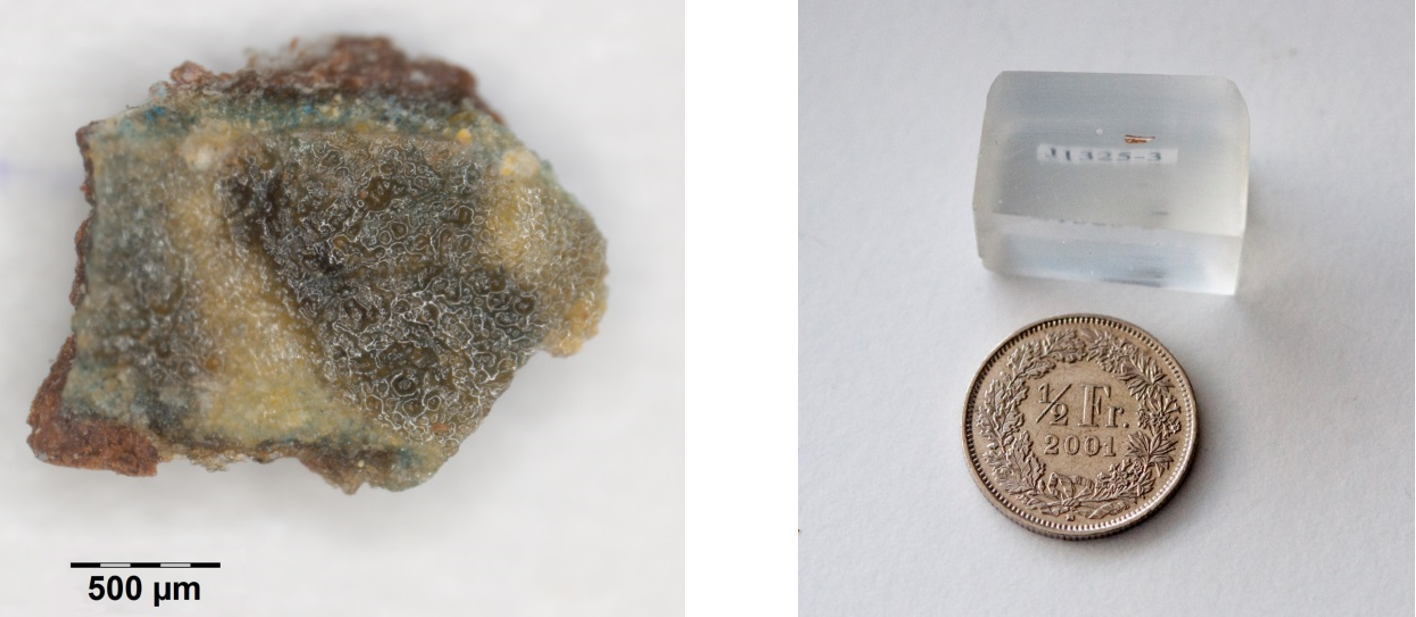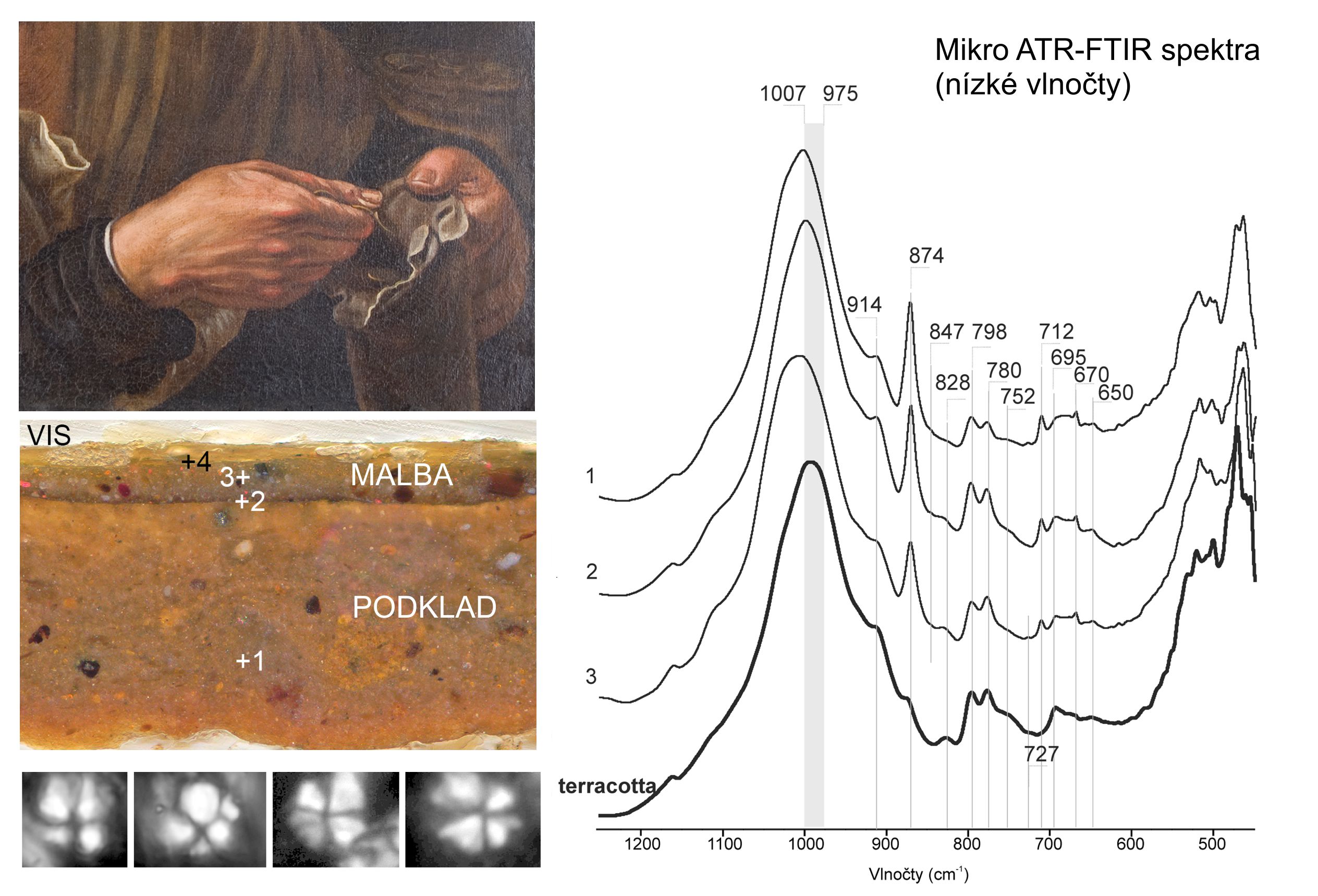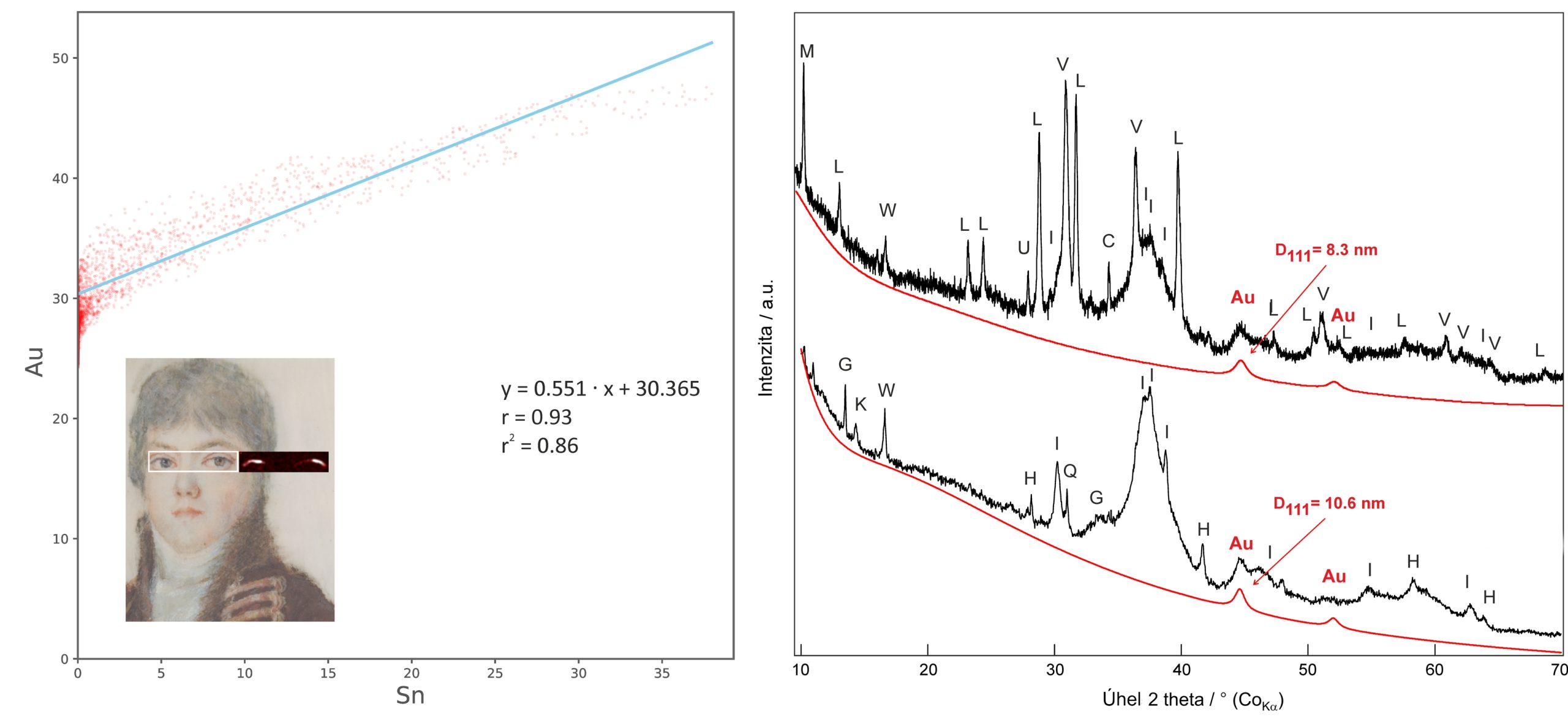Contact person: David Hradil
Throughout history, painters have used various materials, both natural and artificial, and applied them in a specific way, thus leaving evidence of historic period as well as region where they worked or were trained in painting. Routine analysis of fine art usually does not address the origin of painting materials and suffices to say that “the employed pigments were available in the given period of time”. It is well-known that it is possible to date artworks based on certain pigments with documented beginning of production. However, the potential of material research in this field is much broader. As demonstrated by our present results, combined use of experimental research and comparative studies together with employment of advanced micro-analytical methods enable identification of characteristics which not only lead to the specification of the pigment type (e.g., ochre, verdigris, lead-tin yellow), but also differentiate its manufacturing or the extraction locality of the raw material. Subsequently, these exact features are directly applicable in provenance analysis of anonymous painted artworks, performed within our expertise.

Figure 1: A fragment obtained from painted artwork: on the left in its raw form, on the right embedded in polyester resin and ground in cross-section. © ALMA Laboratory
Every genesis leaves traces, such as contamination by by-products formed during manufacturing, or specific combination of minerals, their type or crystallinity corresponding to the conditions of their natural formation, presence of accessory minerals typical for a certain type of geological site or typical morphology; therefore, provenance determination may be performed using, e.g., structural analysis of mineral pigments by powder X-ray diffraction and microdiffraction, analysis of trace elements or certain isotopes, or by micropaleontological analysis. However, finding decisive signs of origin is not facile due to a number of complicating factors, such as small dimensions of samples obtainable from artworks (Fig. 1), their heterogeneity, the necessity to apply non-invasive and non-destructive approaches etc. Therefore, every single inquiry or type of material requires methodological research, especially with regard to ever-widening possibilities of analytical instrumentation.
Regional provenance determination of an artwork based on materials may be achieved, e.g., via clay minerals – earths. In Baroque period, coloured earths were used especially for the preparation of grounds; they were available (also economically) on many places, and it made no sense to transport them over long distances. Moreover, in this period of time, the painters had usually bought ready-to-use canvases on the places where they worked. Therefore, the composition of the clay material is regionally specific. Based on the structures of clay minerals, we have differentiated Baroque paintings of mid-European and Italian provenance and we have also proven that the clays employed in some of the north Italian paintings from the 16th to the 17th century are identical to those used in the terracotta sculptures created by Renaissance masters (Fig. 2). The composition of clay grounds is that much specific that it is possible to differentiate even neighbouring regions: artworks painted by Caravaggio and others in Italy may be told apart from artworks painted on Malta.

Figure 2: Section of micro-ATR FTIR spectra of Baroque grounds (layer +1 in the middle photograph on the left) of three different Italian paintings from the 17th century (denoted 1, 2, 3) and their comparison with the spectrum of pottery clay used for the preparation of terracotta statuette – fluctuating content of carbonates is apparent from the intensity of 874 cm-1 band. Fossil nanoplankton (bottom left) proves the same geological age of the raw material. © ALMA Laboratory
An example of reconstruction of manufacturing is the discovery of the so-called Purple of Cassius in portrait miniatures on ivory. This pigment, consisting of gold nanoparticles, has been used already in the 17th century by glassmakers in the production of ruby glass and, later on, to colour the glazes. More processes for its manufacturing started to emerge. In painted artworks, it has been used exclusively in miniature paintings. Using novel approaches of non-invasive analysis, we have discovered that this pigment identified in miniatures originating from the first half of the 19th century has been manufactured via the traditional (Cassius’) process, using tin as a reducing agent, which remained (in the form of SnO2) in the resulting product. Analytically, it is possible to prove strong correlation of Au and Sn in the purple colour, and calculations using data from diffraction patterns enabled specification of the average size of Au nanoparticles: the values were corresponding to the ones known from the glazes (around 10 nm). (Fig. 3) The size of the nanoparticles determines whether the desired pigment shade is achieved, which has been subsequently verified by successful laboratory pigment replication.

Figure 3: Left: correlation of Au/Sn calculated from X-ray fluorescence maps obtained on miniature portrait of a young officer, where the thin lines of his upper eyelids were painted using Purple of Cassius; the figure shows the area of calculations and resulting maps of Au and Sn (white pixels indicate the best overlaps of Au and Sn); right: diffractograms with calculations of size of Au nanoparticles detected in the purple pigment in other two miniatures. © ALMA Laboratory
References:
- Hradil D., Hradilová J., Holcová K., Bezdička P.: The use of pottery clay for canvas priming in Italian Baroque – An example of technology transfer. Applied Clay Science 165 (2018), 135-147. https://doi.org/10.1016/j.clay.2018.08.011
- Hradil D., Hradilová J., Lanterna G., Galeotti M., Holcová K., Jaques V., Bezdička P.: Clay and alunite-rich materials in painting grounds of prominent Italian masters – Caravaggio and Mattia Preti. Applied Clay Science 185 (2020) 105412. https://doi.org/10.1016/j.clay.2019.105412
- Hradilová J., Hradil D., Pech M., Bezdička P., Neděla V., Tihlaříková E., Targowski P.: Complementary use of X-ray based imaging and analytical methods in the investigation of miniature portraits Microchemical Journal 153 (2020) 104371. https://doi.org/10.1016/j.microc.2019.104371
- Širillová Z., Hradilová J., Pech M., Švarcová S., Bezdička P., Neděla V., Hradil D.*: Gold nanoparticles in painted miniatures on ivory: Non-invasive evidence and characterisation. Dyes and Pigments 210 (2023), 111015. https://doi.org/10.1016/j.dyepig.2022.111015
- Čermáková Z., Hradil D., Bezdička P., Hradilová J., Pánová K.: Unique Wood Ash Co-Coloured Glass Tessera from Mediaeval Madonna: Raman Spectroscopic Study of Production Technology. Spectrochimica Acta Part A 303 (2023), 123182. https://doi.org/10.1016/j.saa.2023.123183
- Hradilová J., Hradil D.*, Širillová Z., Švarcová S.: Tracing Origin and History of Virgin and Child in Majesty, the Oldest Wooden Polychrome Statuette in the Czech Republic. Archaeometry 66 (2024), 458-476. https://doi.org/10.1111/arcm.12928